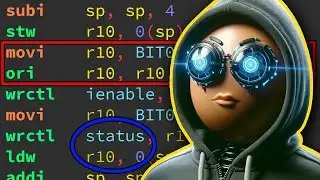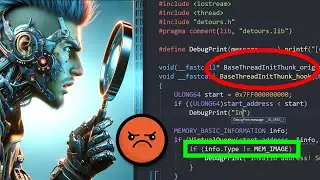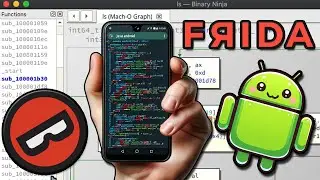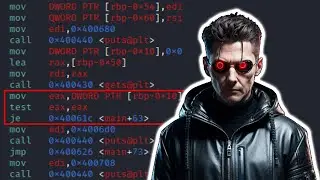Return Address Spoofing For Game Hacking
🔥 Hide From Anti-Cheats by Using Return Address Spoofing
👨💻 Buy Our Courses: https://guidedhacking.com/register/
💰 Donate on Patreon: / guidedhacking
❤️ Follow us on Social Media: https://linktr.ee/guidedhacking
🔗GH Article: https://guidedhacking.com/threads/ret...
Full Credits to namazso - we are just explaining how his code works
🔗 https://www.unknowncheats.me/forum/an...
https://github.com/namazso
https://x.com/namazso
📜 Video Description:
Return address spoofing is a technique frequently utilized in numerous exploits, including buffer overflow attacks. Understanding how to spoof return addresses can provide insight into this often-used trick in the world of reverse engineering and video game hacking. Through return address spoofing, one can manipulate a program or game's control flow, changing its behavior in ways the original developers did not intend.
In standard scenarios, the execution of a program involves a series of function calls. Upon each call, the address of the instruction following the function call (the return address) is pushed onto the stack. After the function executes, control is returned to the location specified by this return address. This is where the concept of spoofing return addresses enters.
With our return address spoofing tutorial, a hacker alters this mechanism by overwriting the return address with an address of their choosing. This is most commonly accomplished by exploiting a vulnerability in the program, such as a buffer overflow, which is a key point to understand when learning how to spoof return addresses. During a buffer overflow, the program writes more data to a buffer (a block of memory) than it can accommodate, leading to the extra data overflowing into adjacent memory space. If the overflowing buffer is located on the stack and the overflow is allowed to overwrite the return address, this can grant the attacker control over the program's execution.
Let's look at how spoofing return addresses could be used in the context of game hacking:
Identify a vulnerable function within the game that can allow for a buffer overflow.
Prepare the payload. This typically includes shellcode, or the code you wish for the game to execute. Crucially, the payload should also contain the new return address that directs to the shellcode.
Trigger the vulnerable function and overflow the buffer with your payload. The game's return address is overwritten with your shellcode's address, a key step in return address spoofing.
Once the function concludes, rather than returning to its original location, it leaps to your shellcode, carrying out your specified code.
Through understanding how to spoof return addresses, one could theoretically enable cheats or adjust game behavior in a variety of ways. It's critical to note, however, that using return address spoofing on software you don't own or have explicit permission to test is both illegal and unethical. This could lead not only to permanent bans in multiplayer games but also potential legal ramifications.
Furthermore, it's worth noting that modern operating systems and software incorporate numerous safeguards against such exploits. Techniques like address space layout randomization (ASLR), non-executable stack, and stack canaries can make the process of spoofing return addresses significantly more complex.
📝 Timestamps:
0:00 - Return Address Spoofing Intro
1:00 - Concept of Spoofing the Return Address
1:51 - Reasoning Behind Spoofing
3:16 - Use Cases for Return Address Spoofing
3:27 - Setting Up the Code
4:10 - Building and Compiling the Program
4:45 - Modifying the Spoof Call Function
5:29 - Using Find Pattern Function
6:58 - Explaining the Program Outputs
8:16 - Implementing and Testing the Spoof Call
9:10 - Reviewing the Result and Understanding the Confusion
11:02 - Advantage of Spoofing Your Return Address
Exploit development strategies like return address buffer overflows disrupt software operations by exceeding buffer limits, altering the control flow via the return address. Similarly, stack-based return address exploits employ the stack's vulnerable structure, enabling attackers to conduct stack smashing address forgery.
By carefully manipulating the return address, adversaries control the application's direction, leading to control flow hijacking via return address. This manipulation paves the way for more complex methods, like return-oriented programming spoofing. Here, hackers use existing code snippets ("gadgets") to reach their objectives.
Techniques like fake return address injection contribute to the growing issue of return address overwrite vulnerabilities. These methods, resulting in buffer overflow return address deception, force the system to execute undesired instructions.
✏️ Tags:
Return Address Spoofing Tutorial
#gamehacking
#reverseengineering
#anticheat































